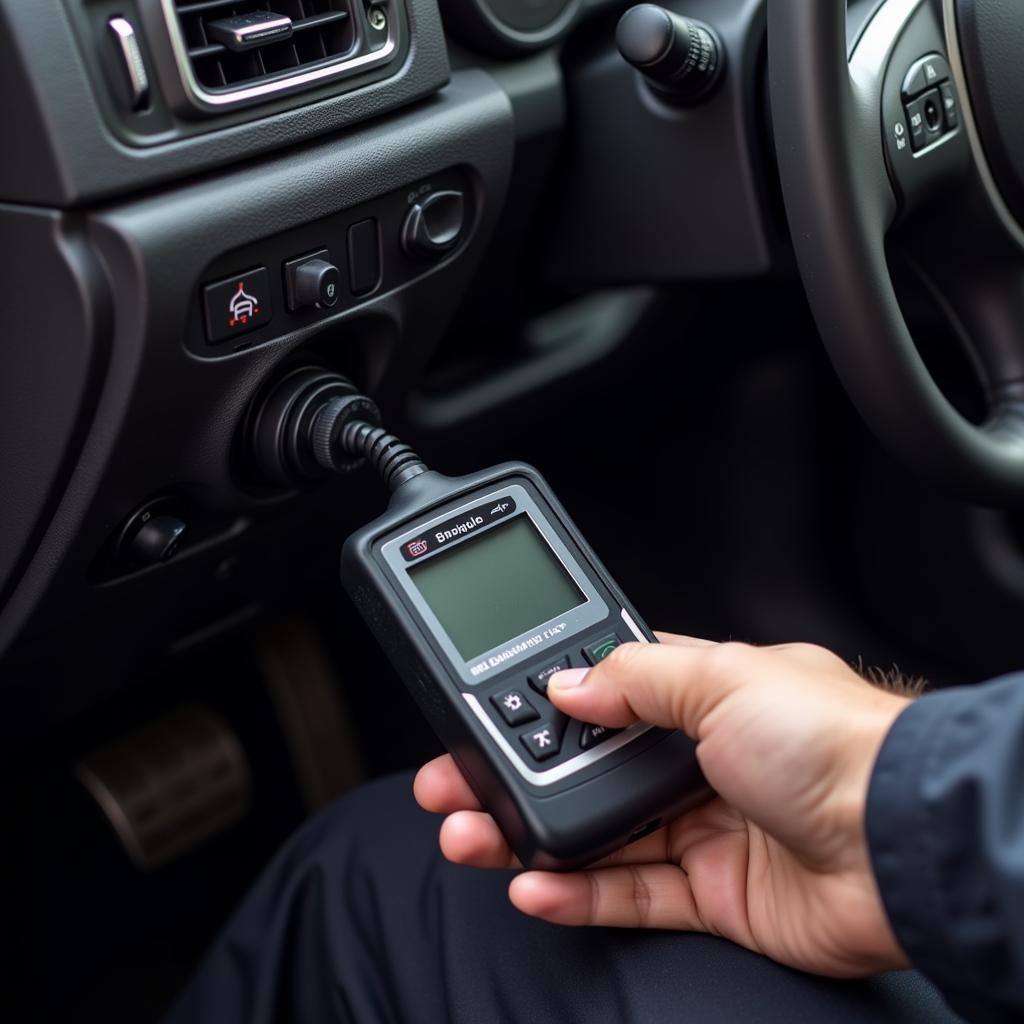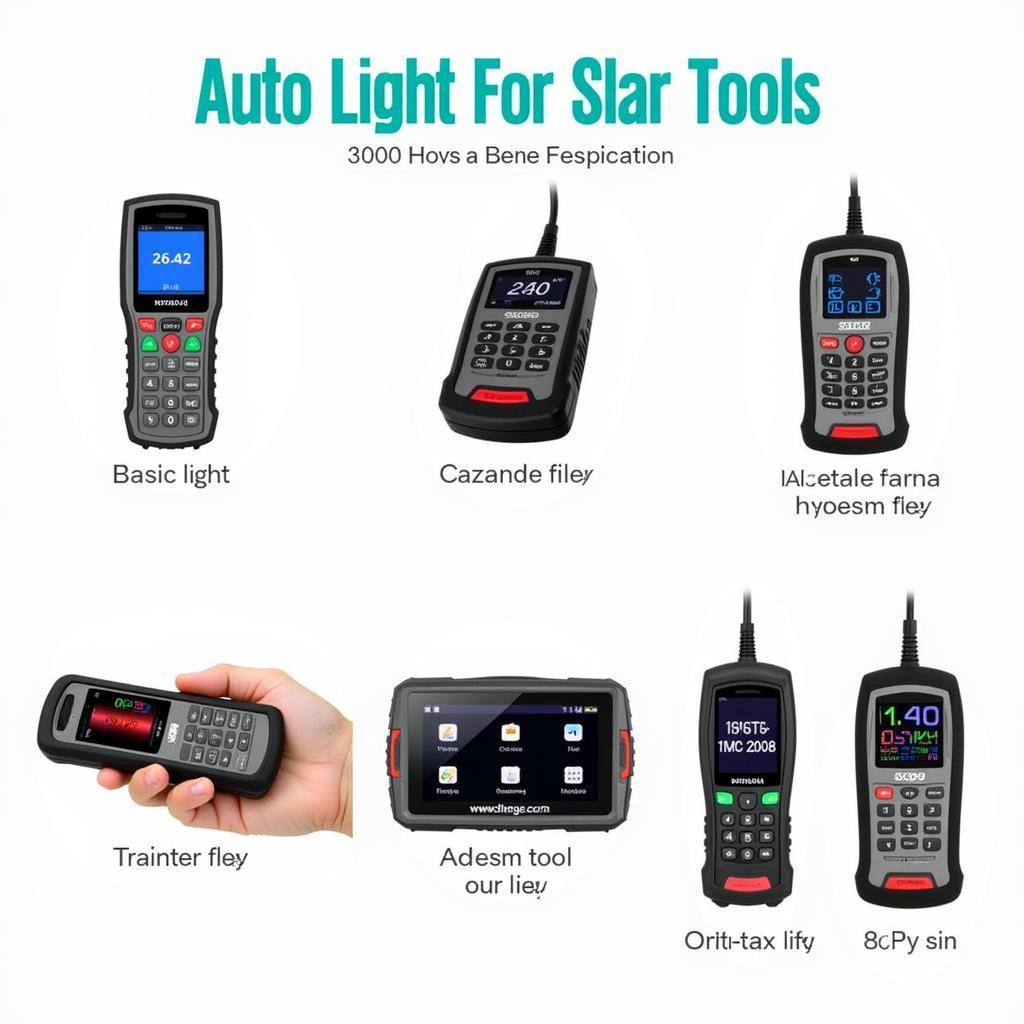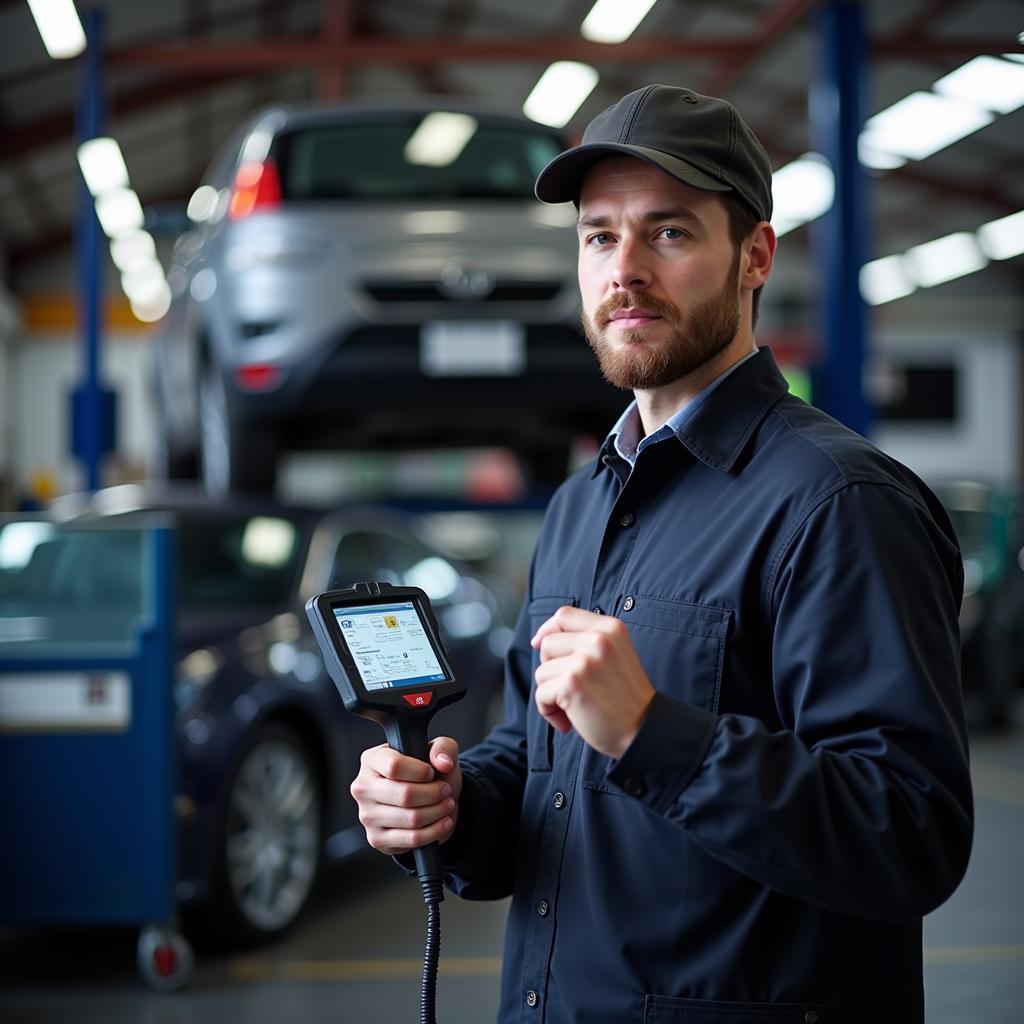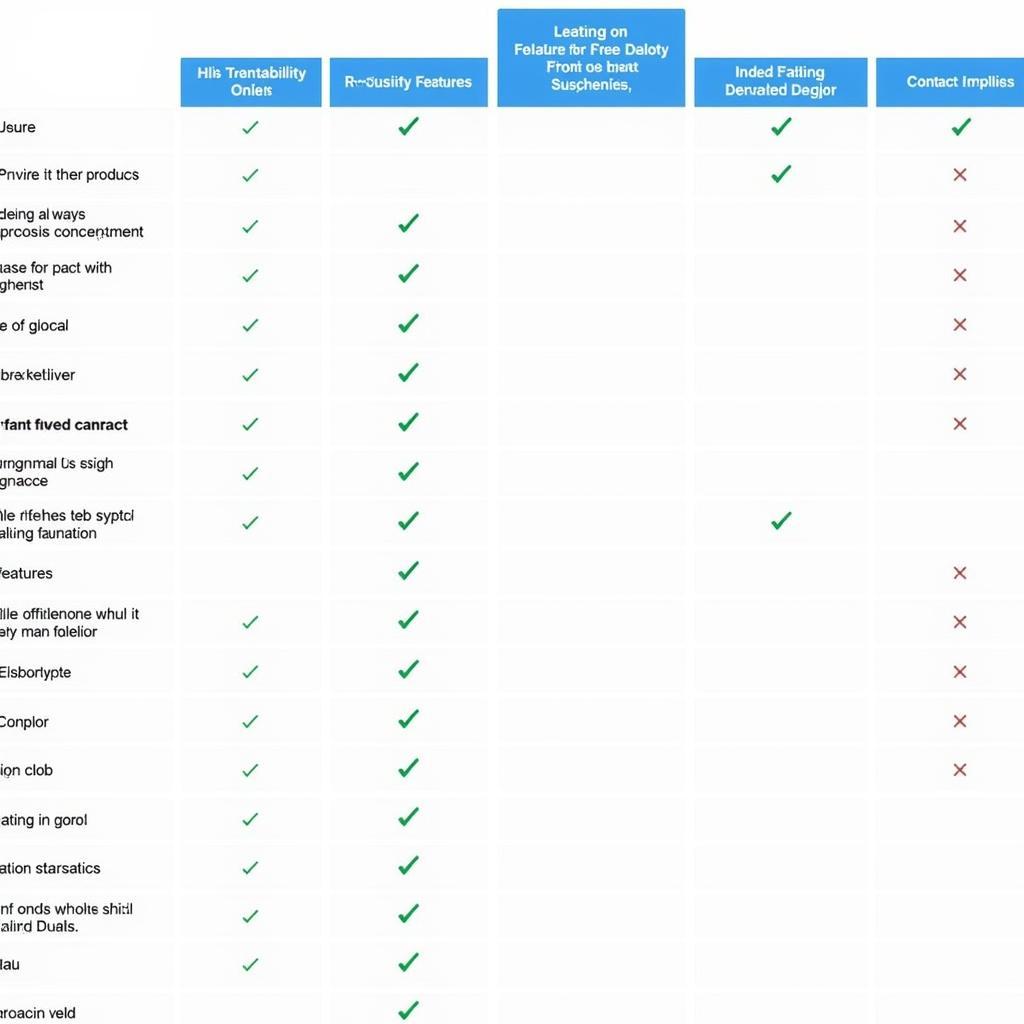Imagine this: your car sputters to a stop, the check engine light flashing ominously. Your heart sinks as you wonder what expensive repair bill awaits. Before you panic, there’s a powerful tool that can help you take control – the Auto Light Scan Tool. This guide will equip you with everything you need to know about this indispensable device, whether you’re a car owner, mechanic, or aspiring technician.
Understanding the Power of Auto Light Scan Tools
An auto light scan tool, also known as an OBD2 scanner, is a device that connects to your car’s onboard computer (ECU) to retrieve diagnostic information. Think of it as a translator between you and your car, deciphering those cryptic dashboard lights and providing valuable insights into your vehicle’s health.
 Mechanic connecting auto light scan tool to car's OBD2 port
Mechanic connecting auto light scan tool to car's OBD2 port
But its capabilities extend far beyond simply reading and clearing trouble codes. Here are just a few ways an auto light scan tool can empower you:
- Diagnose Engine Problems: Identify issues related to the engine, transmission, emissions system, and more.
- Monitor Real-Time Data: View live sensor data such as engine speed, coolant temperature, and oxygen sensor readings, helping you pinpoint problems and monitor performance.
- Reset Warning Lights: After resolving an issue, you can use the scan tool to reset the check engine light and other warning indicators.
- Analyze Emissions Readiness: Determine if your vehicle is ready for emissions testing.
- Enhance Performance Tuning: For the enthusiast, some advanced scan tools allow you to modify certain parameters for performance optimization.
Choosing the Right Auto Light Scan Tool for Your Needs
The market offers a dizzying array of scan tools, from basic code readers to professional-grade diagnostic systems. To make an informed decision, consider these key factors:
1. Functionality:
- Basic Code Readers: Ideal for car owners who want to read and clear basic trouble codes.
- Mid-Range Scanners: Offer additional features like live data streaming, freeze frame data, and compatibility with multiple vehicle makes.
- Professional-Grade Systems: Provide comprehensive diagnostic capabilities, advanced programming functions, and access to manufacturer-specific data.
 A variety of auto light scan tools displayed on a workbench.
A variety of auto light scan tools displayed on a workbench.
2. Vehicle Compatibility:
Ensure the scan tool you choose is compatible with your car’s make, model, and year. OBD2 scanners are standardized for vehicles manufactured after 1996, but some older cars might require specific adapters.
If you’re unsure about compatibility, consider the cen tech obd ii & can deluxe scan tool , known for its broad compatibility with various vehicle makes and models.
3. User Interface and Features:
Look for a scan tool with an intuitive interface, clear display, and easy-to-navigate menus. Consider features like:
- Multilingual support: If you need to switch between languages.
- Data logging: To record and analyze data over time.
- Printing capabilities: To generate hard copies of diagnostic reports.
4. Budget:
Auto light scan tools range in price from affordable to high-end. Set a budget that aligns with your needs and the level of functionality required.
“Investing in a quality scan tool is essential for any car owner or mechanic. It’s like having an X-ray vision into your car’s health,” says John Smith, a seasoned automotive engineer with over 20 years of experience. “A good tool can save you time, money, and unnecessary trips to the mechanic.”
Mastering the Basics: How to Use an Auto Light Scan Tool
Using an auto light scan tool is generally straightforward, even for beginners. Here’s a simplified step-by-step guide:
-
Locate the OBD2 Port: The OBD2 port is usually located under the dashboard, on the driver’s side.
-
Connect the Scan Tool: Turn off the ignition and plug the scan tool into the OBD2 port.
-
Turn on the Ignition: Turn the ignition key to the “on” position, but don’t start the engine.
-
Select the Vehicle: Enter your car’s year, make, and model into the scan tool.
 A mechanic using an auto light scan tool to diagnose a car problem.
A mechanic using an auto light scan tool to diagnose a car problem.
-
Read Trouble Codes: Select the “Read Codes” option to retrieve any stored diagnostic trouble codes.
-
Interpret Codes: Each code corresponds to a specific problem. Use the scan tool’s built-in code library or refer to a reliable online resource to understand the meaning of each code.
-
Diagnose and Repair: Use the trouble codes and any additional data provided by the scan tool, such as freeze frame data, to diagnose the problem and perform necessary repairs.
-
Clear Codes: After addressing the issue, use the scan tool to clear the trouble codes and reset the check engine light.
Beyond Diagnostics: Exploring Advanced Features
As you become more familiar with your auto light scan tool, you can delve into its more advanced capabilities:
-
Live Data Streaming: This feature allows you to view real-time data from various sensors, such as engine RPM, oxygen sensor readings, and coolant temperature. By monitoring these parameters, you can gain deeper insights into your engine’s performance and identify potential problems before they escalate.
-
Freeze Frame Data: When a trouble code is triggered, the scan tool captures a snapshot of the engine’s operating conditions at that moment. This “freeze frame” data provides valuable clues about the factors that contributed to the problem, facilitating faster and more accurate diagnoses.
-
Component Tests: Some advanced scan tools offer component tests, which allow you to activate specific components, such as fuel injectors or solenoids, to verify their functionality. This can be particularly helpful in pinpointing the root cause of a problem.
-
Adaptive Resets and Programming: For experienced users, certain scan tools provide access to adaptive reset functions and even basic programming capabilities. These features can be used to reset learned parameters, program new keys, or perform other specialized tasks, but it’s crucial to proceed with caution as improper use can potentially harm your vehicle’s systems.
“Modern cars are increasingly complex, but an auto light scan tool can empower even the everyday driver to take control of their vehicle’s maintenance,” says Emily Chen, a certified automotive technician and technical trainer. “With the right tool and a little knowledge, you can confidently diagnose problems, save money, and keep your car running smoothly.”
Conclusion: Embracing the Future of Car Care
In today’s technologically advanced automotive landscape, an auto light scan tool is no longer a luxury but a necessity. Whether you’re a seasoned mechanic, a DIY enthusiast, or simply a car owner who wants to be more informed, investing in the right scan tool can pay dividends in terms of cost savings, peace of mind, and a deeper understanding of your vehicle.
Ready to unlock the power of automotive diagnostics? Contact ScanToolUS today at +1 (641) 206-8880 or visit our office at 1615 S Laramie Ave, Cicero, IL 60804, USA, to explore our wide selection of auto light scan tools and find the perfect one for your needs.

